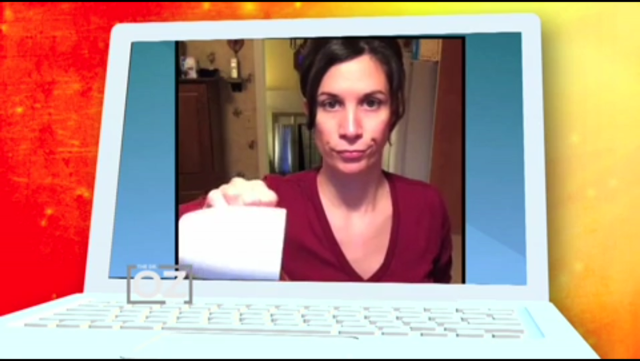The point of a headshot is to snap a photo to clearly show a person’s face. It’s somewhat close up and is usually a shot taken from the shoulders up. Having it done properly can make all the difference in conveying a professional image to all that see it. If you’re not able to hire a professional, I have some helpful tips for having a friend, family member or another person help you out for very little money or even for free. Here are some basic photography tips I learned from taking classes and working as a campus photographer back in college.
Table of Contents
Toggle1. Look at the camera.
Though it’s a very popular way to make money online, and take photos looking off to the side, I don’t believe it’s appropriate for a headshot. Looking straight at the camera is a basic rule in photography for capturing a headshot. Aim for the person’s pupils when taking one. One of the goals is to fully see your face which includes the pupils of the eyes. Not looking into the camera for a headshot is like not making eye contact when you talk to someone. It can come off insincere. For this reason, it’s extremely important to look into the camera.
2. Angles can make a difference.
While there’s nothing wrong with taking a headshot straight on, photos can come out better when the cameras are angled to flatter the subject. Try to position the camera slightly higher than your head facing down. You can make a double chin look less noticeable, eyes appear bigger, and it tends to look more flattering in general. Other times, having the camera slightly lower can make the person look a little larger (if that’s what you’re looking to do). Try out different angles to see what works best.
3. Let there be light.
One way to ensure that there is proper lighting on the subject’s face is to put the light source behind the camera but aimed at the face. If it’s the other way around, the background will be lit, but the subject will not be. It’s a classic photography mistake.
4. Reflecting objects in the shot can be a no-no.
Avoid taking photos with glass, mirrors, windows, or picture frames in the background. It’s easy for the light to reflect right back at the camera forming a little ball of light or you can see the person taking the photo in the reflection. If someone is taking your photo straight on using a flash indoors, sometimes the flash will appear in the picture. It’s the light reflecting right back at you.
If you’re forced to take a photo in this setting, you cannot take the photograph straight on against the wall where those items are. The subject will have to be on an angle (say 45°) and then the camera needs to follow where the person is. With this technique, the camera will still capture the subject straight on, but not the background. So the subject is still facing forward, but their back isn’t parallel to the wall (assuming the mirror or picture frame is hung on the wall). If the flash hits any object that reflects light, it will bounce off to the side and will most likely not be in the picture.
6. Soak up the natural light.
I believe natural lighting is best for taking a headshot. You can add a softness and warmth to the skin that can’t be captured quite the same way as taking a photo indoors with a flash. Head outside right before the sun goes down and have the person taking the photo snap a bunch of shots outdoors.
Another option is to use natural lighting when you’re inside too. If you can take photos indoors in a room with large windows or glass slider doors that let a lot of light in, it can work too. This way, you can stay inside while reaping the benefits of great sunlight. Though the photo below is not a headshot, here is a sample photo I used for a television segment. It serves as a sample to use lighting that’s coming in from my window.

7. Look for an enthusiast.
Another option is to ask a photo enthusiast. Think of that friend that always has the best shots from a big event or special occasion. That person is always snapping shots or is a self-proclaimed hobbyist. Ask that person if they would be willing to help you with your headshots. You can pay them, barter, or take them to lunch for their time. Agree upon something that seems fair.
8. Search for a semi-professional.
If you don’t want to have a friend play photographer, but you’re low on funds when it comes to hiring a full-blown professional, think about hiring one in the making. Ask your network if they know of anyone who is studying photography and would like to take some basic headshots for XYZ amount.
You can easily send out a search party via social media including platforms like Facebook or fire off a mass email to do the trick. Obviously, you still want to see some work samples and make sure they have experience taking high-resolution photos. Find out if they have an Instagram account so you can see their work before you fully commit to working together.
9. Take a peek at the pros.
No matter who takes the photo, look at sample headshots by professionals. Many of them have samples on websites or Instagram accounts you can check out. Try to recreate the look and feel of the photo when you take your headshot. You can get ideas for poses, the mood you want to convey, and figure out how you want to showcase your personality. You can even decide if you want to smile show your teeth or have more of a closed-lip smile. Another detail you might also notice is that they will have a plain background like a wall or some other backdrop that looks professional so the focus stays on the person and not what’s in the background.
The Bottom Line
If you need a photo for a website, social media profile, media interviews, etc., it may sound too expensive which may cause you to not even bother. Take advantage of the tips mentioned. You might be able to walk away with some nice photos and post them when needed in no time.














